The Portable Nineteenth-Century African American Women Writers Read online
Page 2
Faulkner put this idea in an interesting way: “The aim of every artist is to arrest motion, which is life, by artificial means, and hold it fixed so that a hundred years later, when a stranger looks at it, it moves again since it is life.” That, I am certain, must be the desire of every writer. But what about the reader? What makes a book a classic to a reader? Here, perhaps, Hemingway said it best: “All good books are alike in that they are truer than if they had really happened and after you are finished reading one you will feel that all that happened to you, and afterward it belongs to you, the good and the bad, the ecstasy, the remorse and sorrow, the people and the places and how the weather was.”
I have been reading black literature since I was fifteen, yanked into the dark discursive universe by an Episcopal priest at a church camp near my home in West Virginia in August 1965, during the terrifying days of the Watts Riots in Los Angeles. Eventually, by fits and starts, studying the literature written by black authors became my avocation; ultimately, it has become my vocation. And, in my own way, I have tried to be an evangelist for it, to a readership larger than my own people, people who, as it were, look like these texts. Here, I am reminded of something W. S. Merwin said about the books he most loved: “Perhaps a classic is a work that one imagines should be common knowledge, but more and more often isn’t.” I would say, of African and African American literature, that perhaps classic works by black writers are works that one imagines should be common knowledge among the broadest possible readership but that less and less are, as the teaching of reading to understand how words can create the worlds into which books can transport us yields to classroom instruction geared toward passing a state-authorized standardized exam. All literary texts suffer from this wrongheaded approach to teaching, mind you; but it especially affects texts by people of color, and texts by women—texts still struggling, despite enormous gains over the last twenty years, to gain a solid foothold in anthologies and syllabi. For every anthology, every syllabus, every publishing series such as the Penguin Classics constitutes a distinct “canon,” an implicit definition of all that is essential for a truly educated person to read.
James Baldwin, who has pride of place in my personal canon of African American authors since it was one of his books that that Episcopal priest gave me to read in that dreadful summer of 1965, argued that “the responsibility of a writer is to excavate the experience of the people who produced him.” But surely Baldwin would have agreed with E. M. Forster that the books that we remember, the books that have truly influenced us, are those that “have gone a little further down our particular path than we have yet ourselves.” Excavating the known is a worthy goal of the writer as cultural archeologist; yet, at the same time, so is unveiling the unknown, the unarticulated yet shared experience of the colorless things that make us human: “something we have always known (or thought we knew),” as Calvino puts it, “but without knowing that this author said it first.” We might think of the difference between Forster and Baldwin, on the one hand, and Calvino, on the other, as the difference between an author representing what has happened (Forster, Baldwin) in the history of a people whose stories, whose very history itself, has long been suppressed, and what could have happened (Calvino) in the atemporal realm of art. This is an important distinction when thinking about the nature of an African American classic—rather, when thinking about the nature of the texts that constitute the African American literary tradition or, for that matter, the texts in any under-read tradition.
One of James Baldwin’s most memorable essays, a subtle meditation on sexual preference, race, and gender, is entitled “Here Be Dragons.” So much of traditional African American literature, even fiction and poetry—ostensibly at least once removed from direct statement—was meant to deal a fatal blow to the dragon of racism. For black writers since the eighteenth-century beginnings of the tradition, literature has been one more weapon—a very important weapon, mind you, but still one weapon among many—in the arsenal black people have drawn upon to fight against antiblack racism and for their equal rights before the law. Ted Joans, the black surrealist poet, called this sort of literature from the sixties’ Black Arts Movement “hand grenade poems.” Of what possible use are the niceties of figuration when one must slay a dragon? I can hear you say, give me the blunt weapon anytime! Problem is, it is more difficult than some writers seem to think to slay a dragon with a poem or a novel. Social problems persist; literature too tied to addressing those social problems tends to enter the historical archives, leaving the realm of the literary. Let me state bluntly what should be obvious: Writers are read for how they write, not what they write about.
Frederick Douglass—for this generation of readers one of the most widely read writers—reflected on this matter even in the midst of one of his most fiery speeches addressing the ironies of the sons and daughters of slaves celebrating the Fourth of July while slavery continued unabated. In his now-classic essay “What to the Slave Is the Fourth of July?” (1852), Douglass argued that an immediate, almost transparent form of discourse was demanded of black writers by the heated temper of the times, a discourse with an immediate end in mind: “At a time like this, scorching irony, not convincing argument, is needed . . . a fiery stream of biting ridicule, blasting reproach, withering sarcasm, and stern rebuke. For it is not light that is needed, but fire; it is not the gentle shower, but thunder. We need the storm, the whirlwind, and the earthquake.” Above all else, Douglass concludes, the rhetoric of the literature created by African Americans must, of necessity, be a purposeful rhetoric, its ends targeted at attacking the evils that afflict black people: “The feeling of the nation must be quickened; the conscience of the nation must be roused; the propriety of the nation must be startled; the hypocrisy of the nation must be exposed; and its crimes against God and man must be proclaimed and denounced.” And perhaps this was so; nevertheless, we read Douglass’s writings today in literature classes not so much for their content but to understand, and marvel at, his sublime mastery of words, words—to paraphrase Calvino—that never finish saying what it is they have to say, not because of their “message” but because of the language in which that message is inextricably enfolded.
There are as many ways to define a classic in the African American tradition as there are in any other tradition, and these ways are legion. So many essays have been published entitled “What Is a Classic?” that they could fill several large anthologies. And while no one can say explicitly why generations of readers return to read certain texts, just about everyone can agree that making a best-seller list in one’s lifetime is most certainly not an index of fame or influence over time; the longevity of one’s readership—of books about which one says, “I am rereading,” as Calvino puts it—on the other hand, most certainly is. So, the size of one’s readership (through library use, Internet access, and sales) cumulatively is an interesting factor to consider; and because of series such as the Penguin Classics, we can gain a sense, for our purposes, of those texts written by authors in previous generations that have sustained sales—mostly for classroom use—long after their authors were dead.
There can be little doubt that Narrative of the Life of Frederick Douglass (1845), The Souls of Black Folk (1903), by W. E. B. Du Bois, and Their Eyes Were Watching God (1937), by Zora Neale Hurston, are the three most classic of the black classics—again, as measured by consumption—while Langston Hughes’s poetry, though not purchased as books in these large numbers, is accessed through the Internet as frequently as that of any other American poet, and indeed profoundly more so than most. Within Penguin’s Portable Series list, the most popular individual titles, excluding Douglass’s first slave narrative and Du Bois’s Souls, are:
Up from Slavery (1903), Booker T. Washington
The Autobiography of an Ex-Colored Man (1912), James Weldon Johnson
God’s Trombones (1926), James Weldon Johnson
Passing (1929), Nella Larsen
The Marrow of Tradition (1898), Charles W. Chesnutt
Incidents in the Life of a Slave Girl (1861), Harriet Jacobs
The Interesting Narrative (1789), Olaudah Equiano
The House Behind the Cedars (1900), Charles W. Chesnutt
My Bondage and My Freedom (1855), Frederick Douglass
Quicksand (1928), Nella Larsen
These titles form a canon of classic of African American literature, judged by classroom readership. If we add Jean Toomer’s novel Cane (1922), arguably the first work of African American modernism, along with Douglass’s first narrative, Du Bois’s The Souls, and Hurston’s Their Eyes, we would most certainly have included many of the touchstones of black literature published before 1940, when Richard Wright published Native Son.
Every teacher’s syllabus constitutes a canon of sorts, and I teach these texts and a few others as the classics of the black canon. Why these particular texts? I can think of two reasons: First, these texts signify or riff upon each other, repeating, borrowing, and extending metaphors book to book, generation to generation. To take just a few examples, Equiano’s eighteenth-century use of the trope of the talking book (an image found, remarkably, in five slave narratives published between 1770 and 1811) becomes, with Frederick Douglass, the representation of the quest for freedom as, necessarily, the quest for literacy, for a freedom larger than physical manumission; we might think of this as the representation of metaphysical manumission, of freedom and literacy—the literacy of great literature—inextricably intertwined. Douglass transformed the metaphor of the talking book into the trope of chiasmus, a repetition with a stinging reversal: “You have seen how a man becomes a slave, you will see how a slave becomes a man.” Du Bois, with Douglass very much on his mind, transmuted chiasmus a half century later into the metaphor of duality or double consciousness, a necessary condition of living one’s life, as he memorably put it, behind a “veil.”
Du Bois’s metaphor has a powerful legacy in twentieth-century black fiction: James Weldon Johnson, in Ex-Colored Man, literalizes the trope of double consciousness by depicting as his protagonist a man who, at will, can occupy two distinct racial spaces, one black, one white, and who moves seamlessly, if ruefully, between them; Toomer’s Cane takes Du Bois’s metaphor of duality for the inevitably split consciousness that every Negro must feel living in a country in which her or his status as a citizen is liminal at best, or has been erased at worst, and makes of this the metaphor for the human condition itself under modernity, a tellingly bold rhetorical gesture—one designed to make the Negro the metaphor of the human condition. And Hurston, in Their Eyes, extends Toomer’s revision even further, depicting a character who can gain her voice only once she can name this condition of duality or double consciousness and then glide gracefully and lyrically between her two selves, an “inside” self and an “outside” one.
More recently, Alice Walker, in The Color Purple, signifies upon two aspects of the narrative strategy of Their Eyes: First, she revisits the theme of a young black woman finding her voice, depicting a protagonist who writes herself into being through letters addressed to God and to her sister, Nettie—letters that grow ever more sophisticated in their syntax and grammar and imagery as she comes to consciousness before our very eyes, letter to letter; and second, Walker riffs on Hurston’s use of a vernacular-inflected free indirect discourse to show that black English has the capacity to serve as the medium for narrating a novel through the black dialect that forms a most pliable and expansive language in Celie’s letters. Ralph Ellison makes Du Bois’s metaphor of the veil a trope of blindness and life underground for his protagonist in Invisible Man, a protagonist who, as he types the story of his life from a hole underground, writes himself into being in the first person (in contradistinction to Richard Wright’s protagonist, Bigger Thomas, whose reactive tale of fear and flight is told in the third person). Walker’s novel also riffs on Ellison’s claim for the revolutionary possibilities of writing the self into being, whereas Hurston’s protagonist, Janie, speaks herself into being. Ellison himself signified multiply upon Richard Wright’s Native Son, from the title to the use of the first-person bildungs-roman to chart the coming to consciousness of a sensitive protagonist moving from blindness and an inability to do little more than react to his environment, to the insight gained by wresting control of his identity from social forces and strong individuals that would circumscribe and confine his life choices. Toni Morrison, master supernaturalist and perhaps the greatest black novelist of all, trumps Ellison’s trope of blindness by returning over and over to the possibilities and limits of insight within worlds confined or circumscribed not by supraforces (à la Wright) but by the confines of the imagination and the ironies of individual and family history, signifying upon Faulkner, Woolf, and García Márquez in the process. And Ishmael Reed, the father of black postmodernism and what we might think of as the hip-hop novel, the tradition’s master parodist, signifies upon everybody and everything in the black literary tradition, from the slave narratives to the Harlem Renaissance to black nationalism and feminism.
This sort of literary signifying is what makes a literary tradition, well, a “tradition,” rather than a simple list of books whose authors happen to have been born in the same country, share the same gender, or would be identified by their peers as belonging to this ethnic group or that. What makes these books special—“classic”—however, is something else. Each text has the uncanny capacity to take the seemingly mundane details of the day-to-day African American experience of its time and transmute those details and the characters’ actions into something that transcends its ostensible subject’s time and place, its specificity. These texts reveal the human universal through the African American particular: All true art, all classics, do this; this is what “art” is, a revelation of that which makes each of us sublimely human, rendered in the minute details of the actions and thoughts and feelings of a compelling character embedded in a time and place. But as soon as we find ourselves turning to a text for its anthropological or sociological data, we have left the realm of art; we have reduced the complexity of fiction or poetry to an essay, and this is not what imaginative literature is for. Richard Wright, at his best, did this, as did his signifying disciple Ralph Ellison; Louis Armstrong and Duke Ellington, Bessie Smith and Billie Holiday achieved this effect in music; Jacob Lawrence and Romare Bearden achieved it in the visual arts. And this is what Wole Soyinka does in his tragedies, what Toni Morrison does in her novels, what Derek Walcott did in his poetry. And while it is risky to name one’s contemporaries in a list such as this, I think that Rita Dove and Jamaica Kincaid achieve this effect as well, as do Colson Whitehead and Edwidge Danticat, in a younger generation. (There are other writers whom I would include in this group had I the space.) By delving ever so deeply into the particularity of the African and African American experience, these authors manage, somehow, to come out the other side, making the race or the gender of their characters almost translucent, less important than the fact that they stand as aspects of ourselves beyond race or gender or time or place, precisely in the same magical way that Hamlet never remains for long stuck as a prince in a court in Denmark.
Each classic black text reveals to us, uncannily, subtly, how the Black Experience is inscribed, inextricably and indelibly, in the human experience, and how the human experience takes one of its myriad forms in blackface, as it were. Together, such texts also demonstrate, implicitly, that African American culture is one of the world’s truly great and eternal cultures, as noble and as resplendent as any. And it is to publish such texts, written by African and African American authors, that Penguin has created this new series, which I have the pleasure of editing.
HENRY LOUIS GATES, JR.
Introduction
“The exceptional career of our women will yet stamp itself indelibly upon the thought of this country,” Fannie Barrier Williams proclaimed in 1893, with a note of what we might think
of as both prophetic defiance and exceptional optimism in her voice, given the mountain of sexist attitudes about the intellectual abilities of women in general, and black women in particular, that female writers had to scale. To read the work of the women in this collection is to realize that well before the dawning of the twentieth century, black women as early as the eighteenth and all through the nineteenth centuries had long embraced the social media called print culture and used print to proclaim and testify to white and black women and men—and to each other—the particularity of their identities as that rara avis, writers who were both women and of African descent. “They were phenomenal women, impressive Sojourners wielding pens of political militancy and social concern,” as Gloria Wade-Gayles has rightly noted.1 Perhaps Anna Julia Cooper put it best in 1892: “only the BLACK WOMAN can say ‘when and where I enter, in the quiet, undisputed dignity of my womanhood, without violence and without suing or special patronage, then and there the whole Negro race enters with me,’” in a formulation that, for its time, was both shockingly original and so poignantly true.

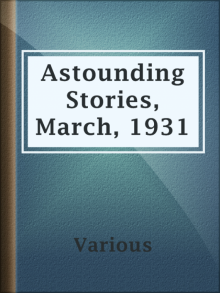 Astounding Stories, March, 1931
Astounding Stories, March, 1931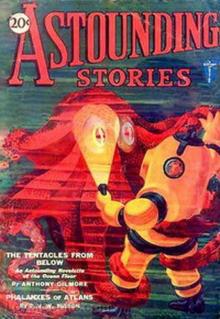 Astounding Stories, February, 1931
Astounding Stories, February, 1931 Futuria Fantasia, Spring 1940
Futuria Fantasia, Spring 1940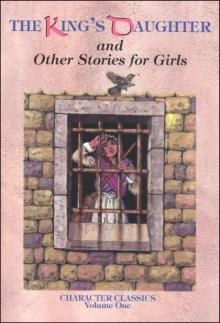 The King's Daughter and Other Stories for Girls
The King's Daughter and Other Stories for Girls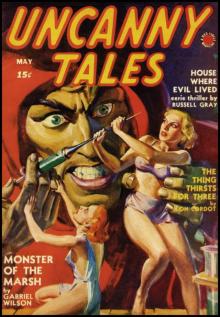 Uncanny Tales
Uncanny Tales Masters of Noir: Volume Two
Masters of Noir: Volume Two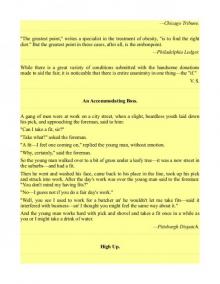 Witty Pieces by Witty People
Witty Pieces by Witty People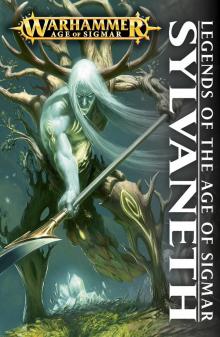 Sylvaneth
Sylvaneth Space Wolves
Space Wolves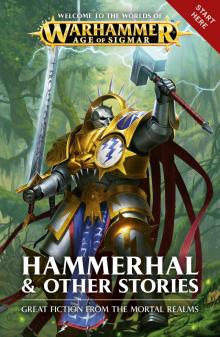 Hammerhal & Other Stories
Hammerhal & Other Stories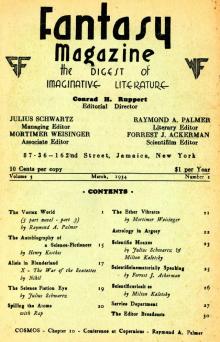 The Fantasy Fan, March, 1934
The Fantasy Fan, March, 1934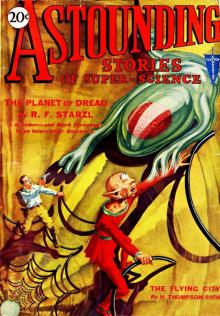 Astounding Stories of Super-Science, August 1930
Astounding Stories of Super-Science, August 1930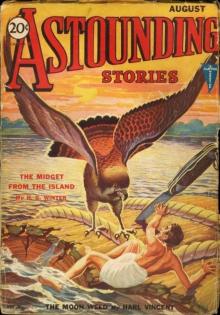 Astounding Stories, August, 1931
Astounding Stories, August, 1931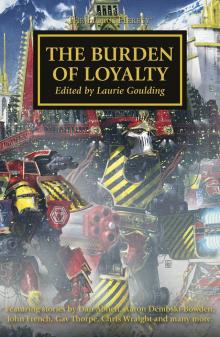 The Burden of Loyalty
The Burden of Loyalty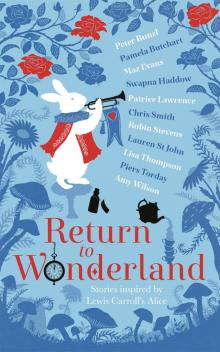 Return to Wonderland
Return to Wonderland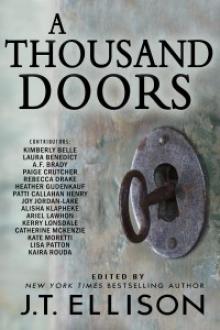 Anthology - A Thousand Doors
Anthology - A Thousand Doors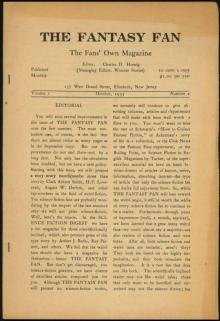 The Fantasy Fan, October 1933
The Fantasy Fan, October 1933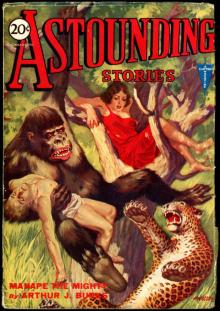 Astounding Stories, June, 1931
Astounding Stories, June, 1931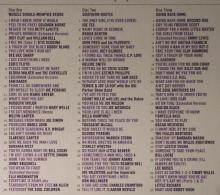 Southern Stories
Southern Stories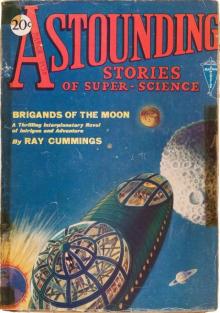 Astounding Stories of Super-Science, May, 1930
Astounding Stories of Super-Science, May, 1930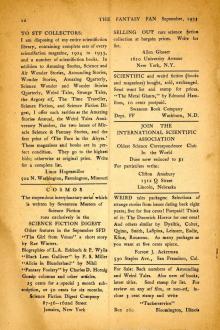 The Fantasy Fan December 1933
The Fantasy Fan December 1933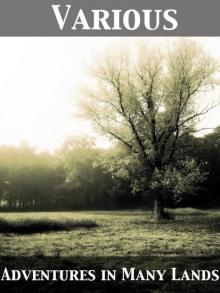 Adventures in Many Lands
Adventures in Many Lands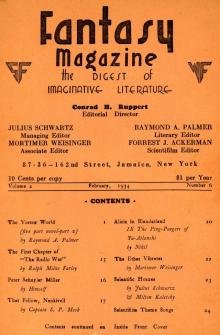 The Fantasy Fan February 1934
The Fantasy Fan February 1934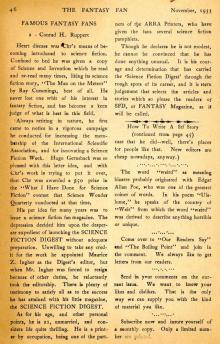 The Fantasy Fan November 1933
The Fantasy Fan November 1933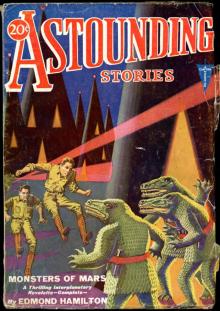 Astounding Stories, April, 1931
Astounding Stories, April, 1931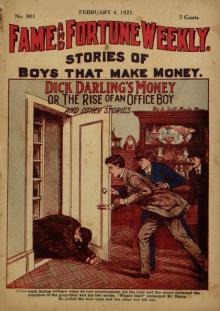 Fame and Fortune Weekly, No. 801, February 4, 1921
Fame and Fortune Weekly, No. 801, February 4, 1921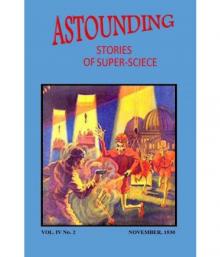 Astounding Stories of Super-Science, November, 1930
Astounding Stories of Super-Science, November, 1930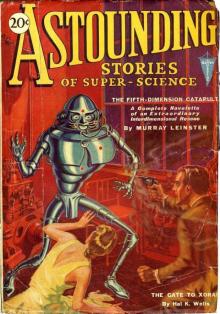 Astounding Stories of Super-Science January 1931
Astounding Stories of Super-Science January 1931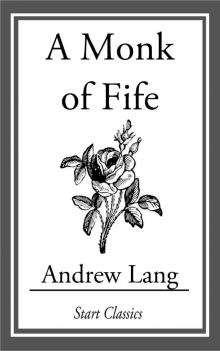 A Monk of Fife
A Monk of Fife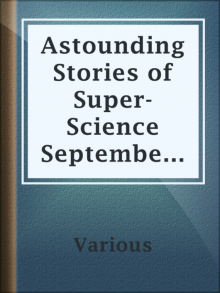 Astounding Stories of Super-Science September 1930
Astounding Stories of Super-Science September 1930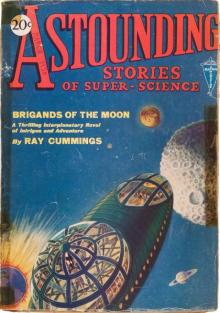 Astounding Stories of Super-Science July 1930
Astounding Stories of Super-Science July 1930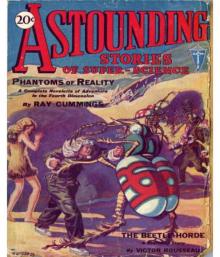 Astounding Stories of Super-Science, June, 1930
Astounding Stories of Super-Science, June, 1930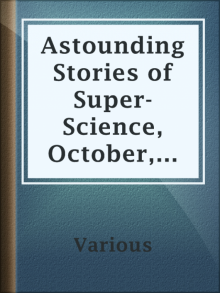 Astounding Stories of Super-Science, October, 1930
Astounding Stories of Super-Science, October, 1930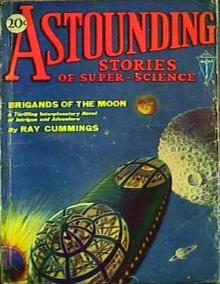 Astounding Stories of Super-Science, March 1930
Astounding Stories of Super-Science, March 1930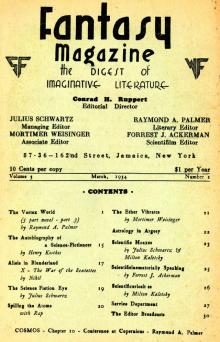 The Fantasy Fan January 1934
The Fantasy Fan January 1934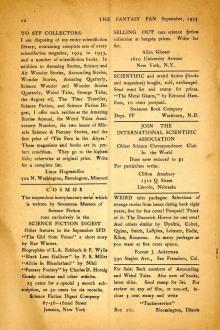 The Fantasy Fan September 1933
The Fantasy Fan September 1933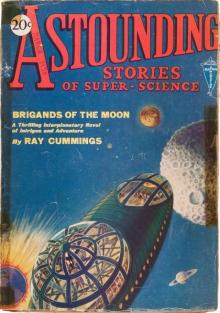 Astounding Stories of Super-Science February 1930
Astounding Stories of Super-Science February 1930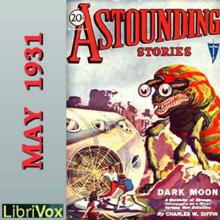 Astounding Stories, May, 1931
Astounding Stories, May, 1931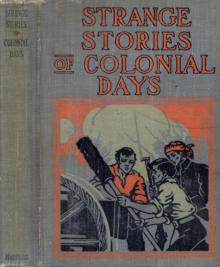 Strange Stories of Colonial Days
Strange Stories of Colonial Days Golden Age of Science Fiction Vol IX
Golden Age of Science Fiction Vol IX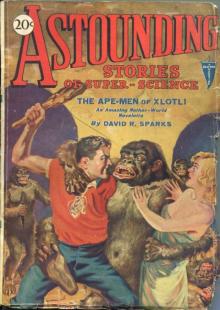 Astounding Stories of Super-Science, December 1930
Astounding Stories of Super-Science, December 1930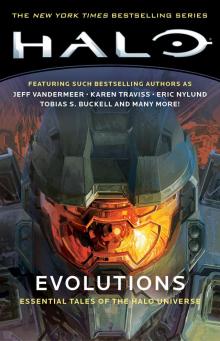 Evolutions: Essential Tales of the Halo Universe
Evolutions: Essential Tales of the Halo Universe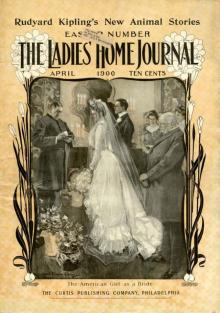 Good Stories Reprinted from the Ladies' Home Journal of Philadelphia
Good Stories Reprinted from the Ladies' Home Journal of Philadelphia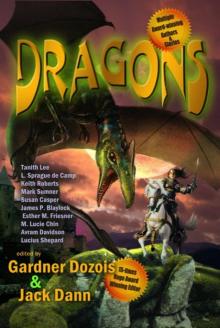 Dragons!
Dragons!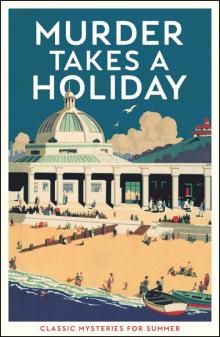 Murder Takes a Holiday
Murder Takes a Holiday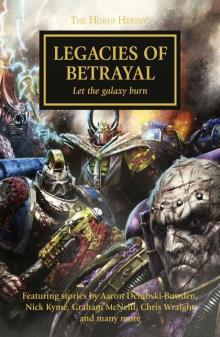 Legacies of Betrayal
Legacies of Betrayal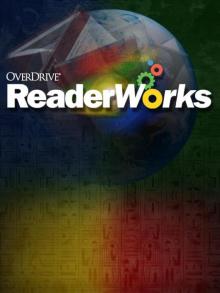 STAR WARS: TALES FROM THE CLONE WARS
STAR WARS: TALES FROM THE CLONE WARS Strange New Worlds 2016
Strange New Worlds 2016 Lippincott's Magazine, August, 1885
Lippincott's Magazine, August, 1885 Golden Age of Science Fiction Vol X
Golden Age of Science Fiction Vol X Hot Stuff
Hot Stuff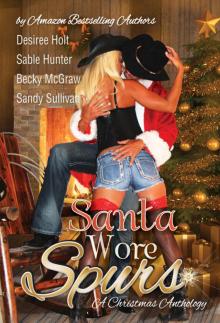 Santa Wore Spurs
Santa Wore Spurs Paranormal Erotica
Paranormal Erotica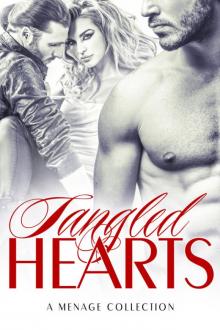 Tangled Hearts: A Menage Collection
Tangled Hearts: A Menage Collection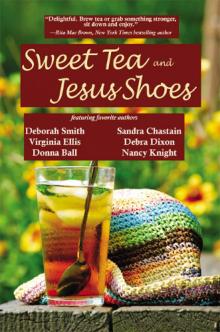 Sweet Tea and Jesus Shoes
Sweet Tea and Jesus Shoes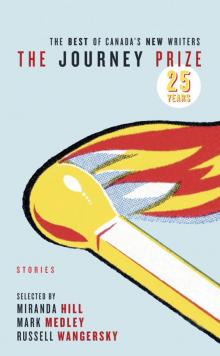 The Journey Prize Stories 25
The Journey Prize Stories 25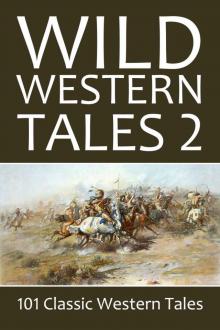 Wild Western Tales 2: 101 Classic Western Stories Vol. 2 (Civitas Library Classics)
Wild Western Tales 2: 101 Classic Western Stories Vol. 2 (Civitas Library Classics) (5/15) The Golden Age of Science Fiction Volume V: An Anthology of 50 Short Stories
(5/15) The Golden Age of Science Fiction Volume V: An Anthology of 50 Short Stories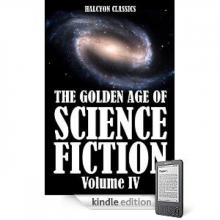 (4/15) The Golden Age of Science Fiction Volume IV: An Anthology of 50 Short Stories
(4/15) The Golden Age of Science Fiction Volume IV: An Anthology of 50 Short Stories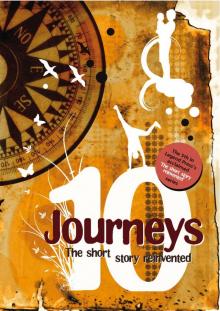 Ten Journeys
Ten Journeys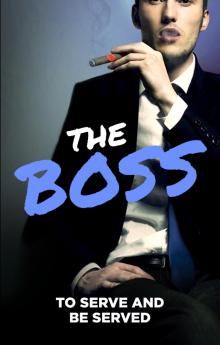 The Boss
The Boss The Penguin Book of French Poetry
The Penguin Book of French Poetry Golden Age of Science Fiction Vol VIII
Golden Age of Science Fiction Vol VIII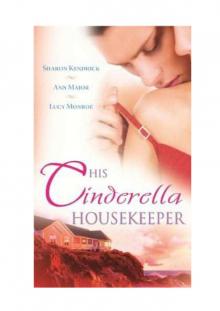 His Cinderella Housekeeper 3-in-1
His Cinderella Housekeeper 3-in-1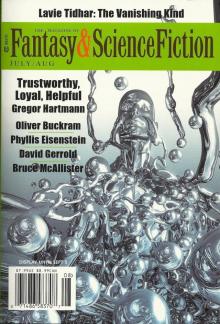 The Magazine of Fantasy & Science Fiction - July/August 2016
The Magazine of Fantasy & Science Fiction - July/August 2016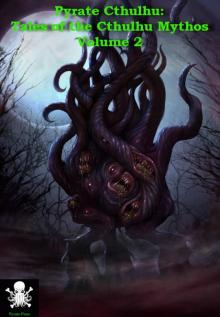 PYRATE CTHULHU - Tales of the Cthulhu Mythos (vol.2)
PYRATE CTHULHU - Tales of the Cthulhu Mythos (vol.2)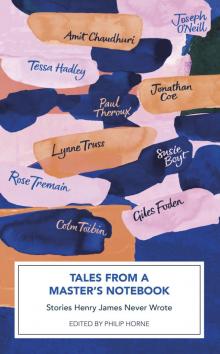 Tales from a Master's Notebook
Tales from a Master's Notebook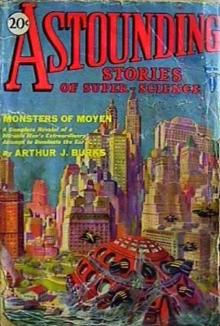 April 1930
April 1930 New Erotica 6
New Erotica 6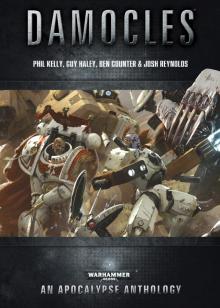 Damocles
Damocles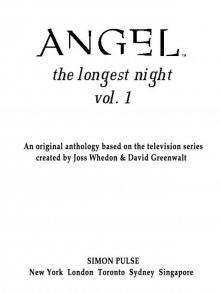 The Longest Night Vol. 1
The Longest Night Vol. 1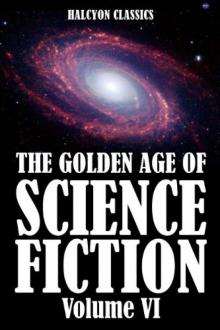 The Golden Age of Science Fiction Volume VI: An Anthology of 50 Short Stories
The Golden Age of Science Fiction Volume VI: An Anthology of 50 Short Stories (1/15) The Golden Age of Science Fiction: An Anthology of 50 Short Stories
(1/15) The Golden Age of Science Fiction: An Anthology of 50 Short Stories Eye of Terra
Eye of Terra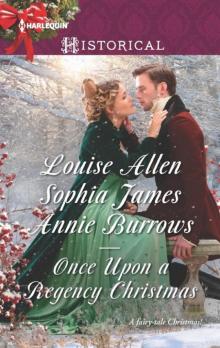 ONCE UPON A REGENCY CHRISTMAS
ONCE UPON A REGENCY CHRISTMAS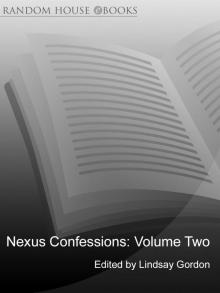 Nexus Confessions
Nexus Confessions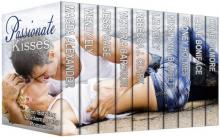 Passionate Kisses
Passionate Kisses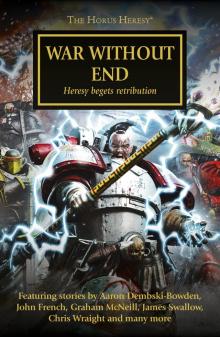 War Without End
War Without End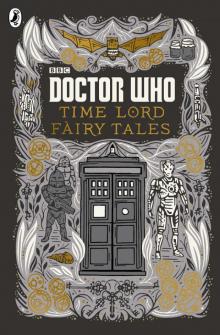 Doctor Who: Time Lord Fairy Tales
Doctor Who: Time Lord Fairy Tales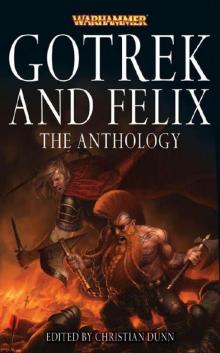 Gotrek and Felix: The Anthology
Gotrek and Felix: The Anthology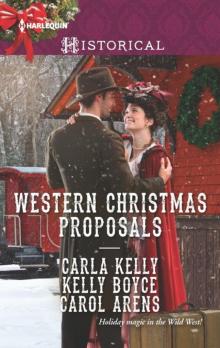 WESTERN CHRISTMAS PROPOSALS
WESTERN CHRISTMAS PROPOSALS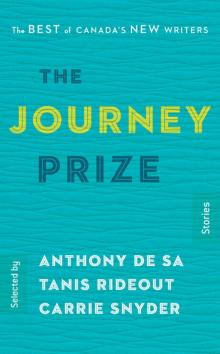 The Journey Prize Stories 27
The Journey Prize Stories 27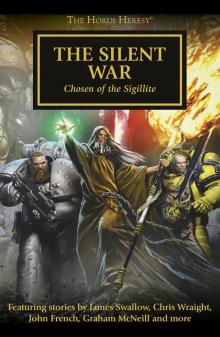 The Silent War
The Silent War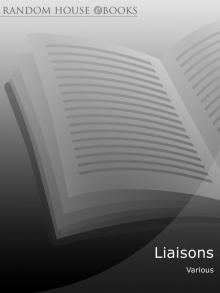 Liaisons
Liaisons Ellora's Cavemen: Tales from the Temple IV
Ellora's Cavemen: Tales from the Temple IV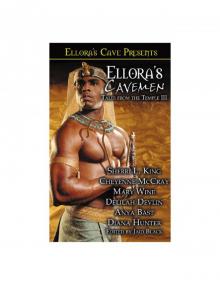 Ellora's Cavemen: Tales from the Temple II
Ellora's Cavemen: Tales from the Temple II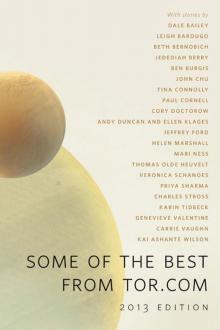 Some of the Best From Tor.com, 2013 Edition: A Tor.Com Original
Some of the Best From Tor.com, 2013 Edition: A Tor.Com Original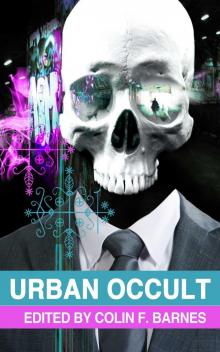 Urban Occult
Urban Occult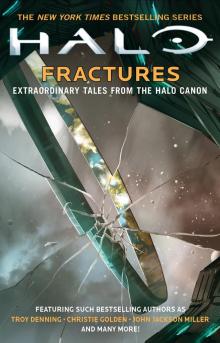 Fractures
Fractures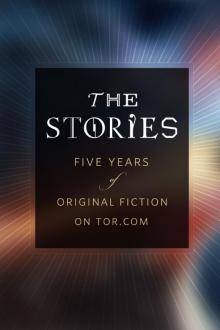 The Stories: Five Years of Original Fiction on Tor.com
The Stories: Five Years of Original Fiction on Tor.com The Penguin Book of Modern British Short Stories
The Penguin Book of Modern British Short Stories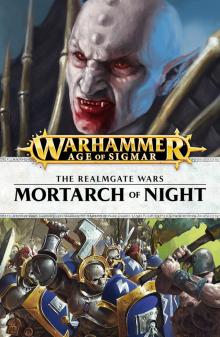 Mortarch of Night
Mortarch of Night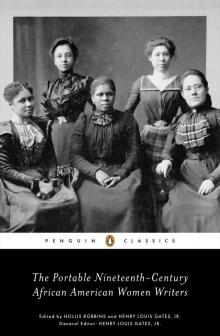 The Portable Nineteenth-Century African American Women Writers
The Portable Nineteenth-Century African American Women Writers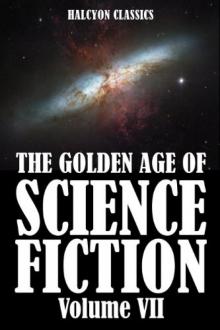 The Golden Age of Science Fiction Volume VII: An Anthology of 50 Short Stories
The Golden Age of Science Fiction Volume VII: An Anthology of 50 Short Stories Holy Bible: King James Version, The
Holy Bible: King James Version, The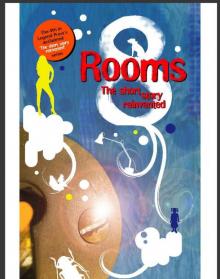 Eight Rooms
Eight Rooms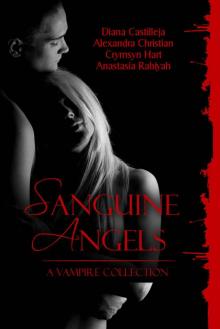 sanguineangels
sanguineangels DarkNightsWithaBillionaireBundle
DarkNightsWithaBillionaireBundle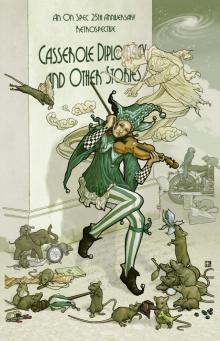 Casserole Diplomacy and Other Stories
Casserole Diplomacy and Other Stories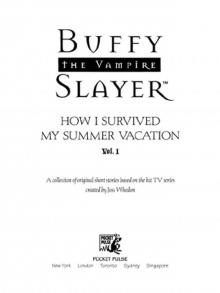 How I Survived My Summer Vacation
How I Survived My Summer Vacation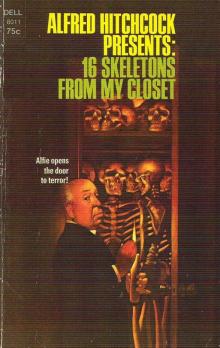 Alfred Hitchcock Presents: 16 Skeletons From My Closet
Alfred Hitchcock Presents: 16 Skeletons From My Closet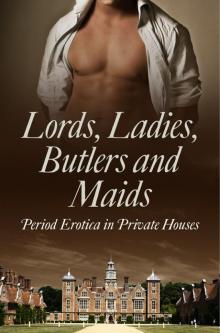 Lords, Ladies, Butlers and Maids
Lords, Ladies, Butlers and Maids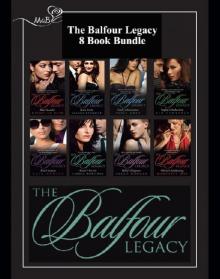 The B4 Leg
The B4 Leg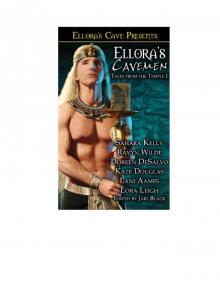 Ellora's Cavemen: Tales from the Temple I
Ellora's Cavemen: Tales from the Temple I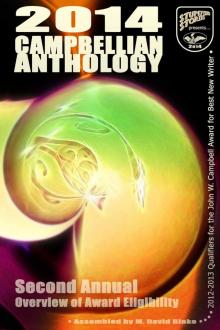 2014 Campbellian Anthology
2014 Campbellian Anthology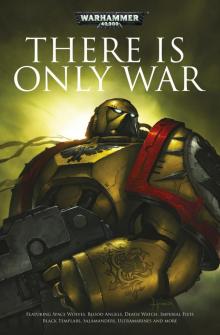 There Is Only War
There Is Only War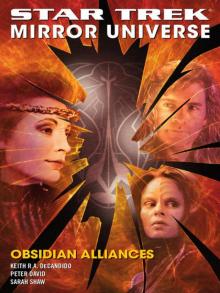 Obsidian Alliances
Obsidian Alliances 12 Gifts for Christmas
12 Gifts for Christmas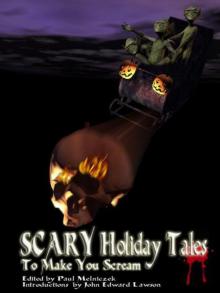 Scary Holiday Tales to Make You Scream
Scary Holiday Tales to Make You Scream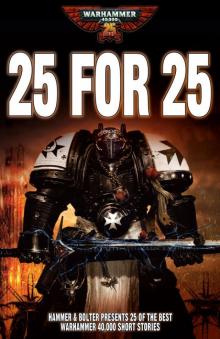 25 For 25
25 For 25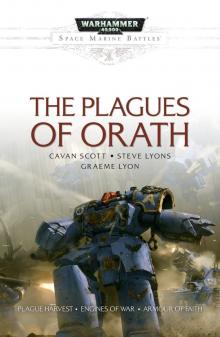 The Plagues of Orath
The Plagues of Orath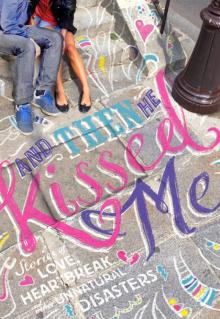 And Then He Kissed Me
And Then He Kissed Me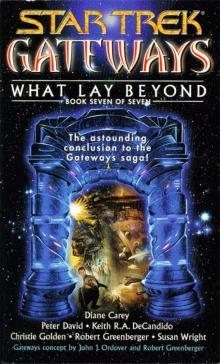 Star Trek - Gateways 7 - WHAT LAY BEYOND
Star Trek - Gateways 7 - WHAT LAY BEYOND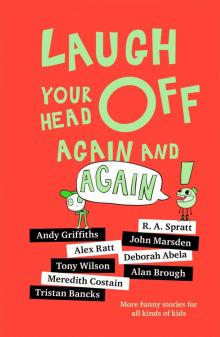 Laugh Your Head Off Again and Again
Laugh Your Head Off Again and Again The Balfour Legacy
The Balfour Legacy Golden Age of Science Fiction Vol XI
Golden Age of Science Fiction Vol XI (3/15) The Golden Age of Science Fiction Volume III: An Anthology of 50 Short Stories
(3/15) The Golden Age of Science Fiction Volume III: An Anthology of 50 Short Stories Shas'o
Shas'o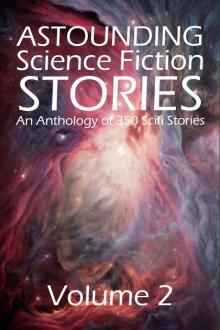 Astounding Science Fiction Stories: An Anthology of 350 Scifi Stories Volume 2 (Halcyon Classics)
Astounding Science Fiction Stories: An Anthology of 350 Scifi Stories Volume 2 (Halcyon Classics)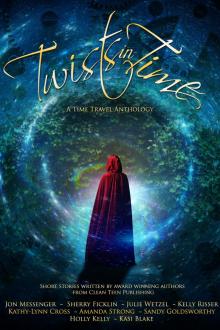 Twists in Time
Twists in Time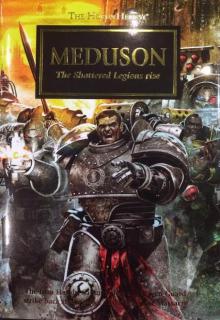 Meduson
Meduson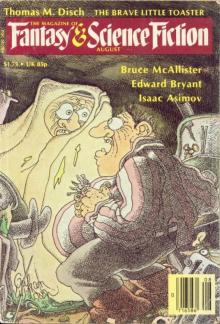 The Magazine of Fantasy & Science Fiction - August 1980
The Magazine of Fantasy & Science Fiction - August 1980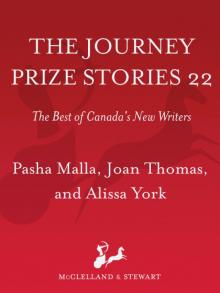 The Journey Prize Stories 22
The Journey Prize Stories 22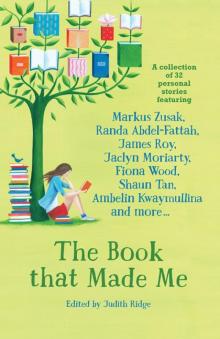 The Book that Made Me
The Book that Made Me Angels of Death Anthology
Angels of Death Anthology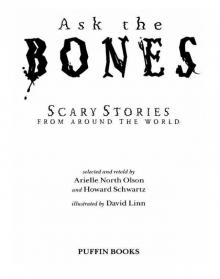 Ask the Bones
Ask the Bones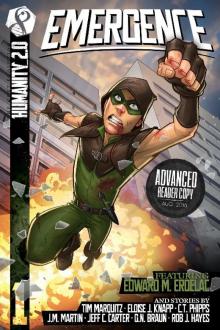 Emergence
Emergence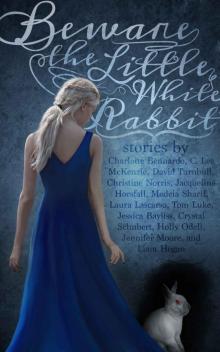 Beware the Little White Rabbit
Beware the Little White Rabbit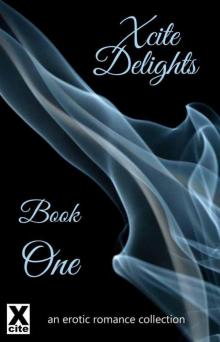 Xcite Delights Book 1
Xcite Delights Book 1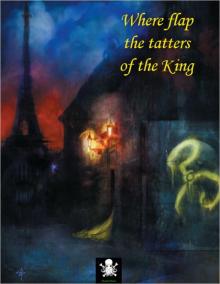 Where flap the tatters of the King
Where flap the tatters of the King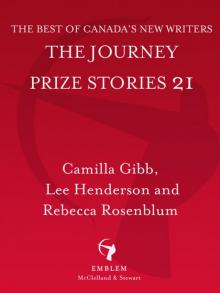 The Journey Prize Stories 21
The Journey Prize Stories 21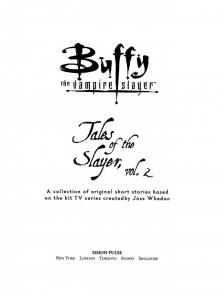 Tales of the Slayer, Volume II
Tales of the Slayer, Volume II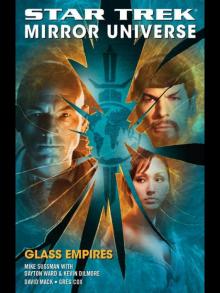 Glass Empires
Glass Empires Golden Age of Science Fiction Vol XII
Golden Age of Science Fiction Vol XII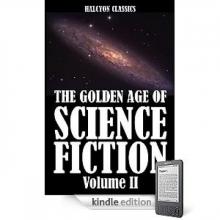 (2/15) The Golden Age of Science Fiction Volume II: An Anthology of 50 Short Stories
(2/15) The Golden Age of Science Fiction Volume II: An Anthology of 50 Short Stories Fairytale Collection
Fairytale Collection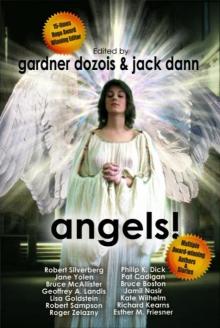 Angels!
Angels!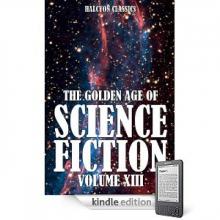 Golden Age of Science Fiction Vol XIII
Golden Age of Science Fiction Vol XIII